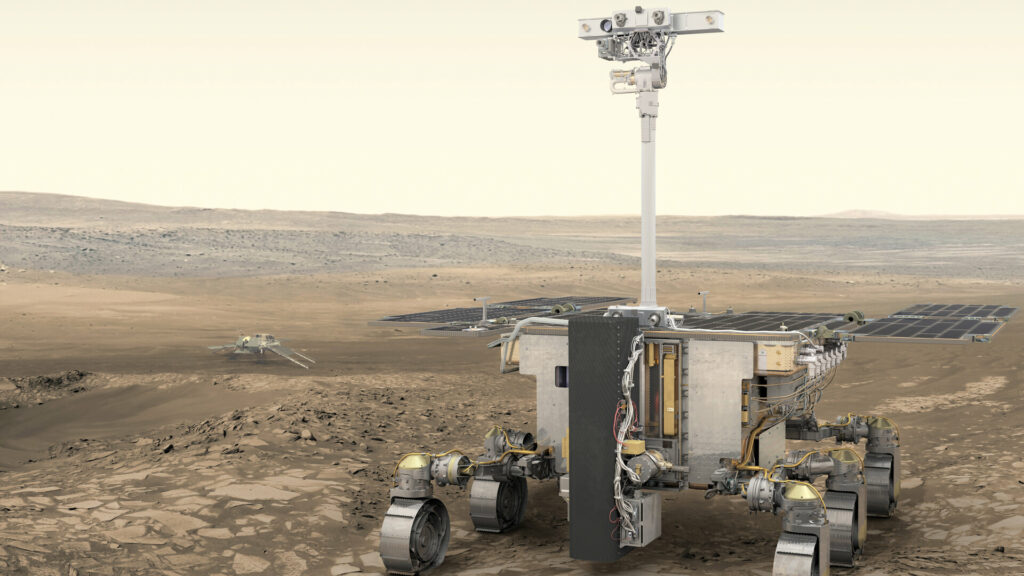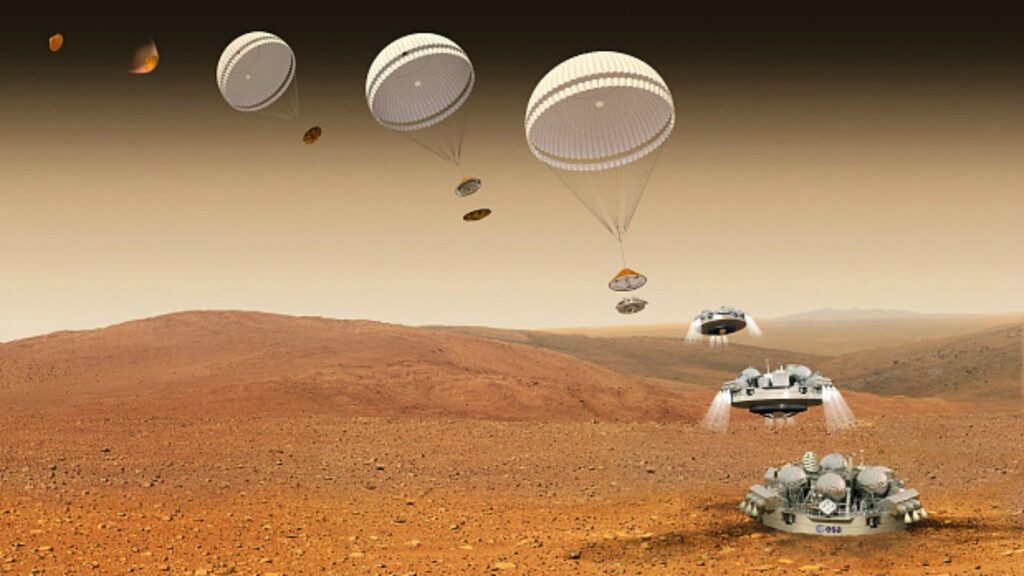At a recent meeting of the Ministerial Council of the countries, a new record ESA budget was approved. Among other things, an agreement was reached to continue financing the ExoMars project with its launch in 2028. However, the final fate of the rover will depend on NASA.
Decision to continue the ExoMars project
The ExoMars mission was supposed to get to the Red Planet in September 2022. The goal of the project was to deliver the Russian landing platform “Kazachok” and the European rover Rosalind Franklin to Mars. The last one had to search for biomarkers — compounds that could indicate the possibility of life on Mars in the past or even at the present time.

Russia’s full-scale invasion of Ukraine put an end to these plans. In protest, ESA completely severed cooperation with the aggressor country. As for ExoMars, it was decided to continue the project without the participation of Russia and replace all the components supplied to it with European ones.
According to ESA estimates, approximately 700 million euros are required to solve this problem. So far, the organization has not named the amount allocated to ExoMars based on the results of the Ministerial Council meeting. But, according to ESA CEO Josef Aschbacher, it is enough to avoid turning the rover into a museum exhibit.
NASA Help
At the same time, ESA will need some help in launching ExoMars, which only NASA can provide. The European Agency is able to replace most of the Russian components, but there are a few exceptions. For example, ESA needs the support of NASA specialists in creating landing engines similar to those used to land the Curiosity and Perseverance rovers. Another area of cooperation is radioisotope heaters.

The Rosalind Franklin rover should receive energy from solar panels. However, several radioisotope heaters — small elements the size of a battery — will also be installed inside it. They are necessary so that the rover’s electronics do not freeze during the cold Martian nights.
Radioisotope heaters use plutonium-238, which Europe does not have, but the United States does. Therefore, NASA’s support in this direction is critically important for the project. At the same time, according to American law, radioisotope elements are prohibited from being exported. Therefore, the rover will have to be launched from American territory by an American rocket. From a financial point of view, this will be the largest part of NASA’s contribution to ExoMars. In return, American scientists will have the opportunity to participate in the project and access its data.
At the moment, ESA and NASA are still in talks about ExoMars. But judging by the statements of officials, the parties have agreed on positions and are close to signing a formal agreement. If it is achieved, ExoMars will go into space in 2028.
According to https://spacenews.com
Follow us on Twitter to get the most interesting space news in time
https://twitter.com/ust_magazine
